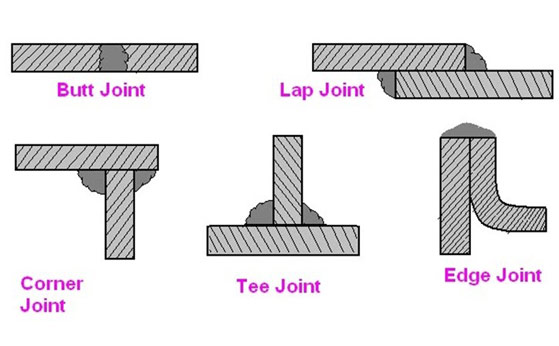Weld Joint Design Types
 The best way to enhance your welding skills is by becoming more aware of the different welding techniques and design types. If you’ve ever pondered about weld joints and tips and which ones you can implement into your next project, you’ve come to the right place! We here at Canaweld would like to talk all about this so you can make the right decision and become the best welder you can possibly be.
The best way to enhance your welding skills is by becoming more aware of the different welding techniques and design types. If you’ve ever pondered about weld joints and tips and which ones you can implement into your next project, you’ve come to the right place! We here at Canaweld would like to talk all about this so you can make the right decision and become the best welder you can possibly be.
A Brief Introduction
There are a number of different factors to consider when creating a proper, professional weld. Getting a good handle on joint design and the different types of joint design is crucial in order to create a good quality product.
Corner Joint
When you need to weld two pieces together and create a 90 degree angle (making the shape of an “L”), this will form what is commonly known as a corner joint. This joint is one of, if not the easiest to assemble and needs little to no edge prep. When you need to create a square frame, this joint design is utilised.
There are two main types of corner joints: closed corner and open corner. When an edge on one piece of metal is connected flush to the other edge of the other piece of material, this is what is considered a closed corner joint. When the corners of both materials touch and are not flush against each other with a gap, that is classified as an open corner joint.
Deciding on which type of corner joint is best will entirely depend on your project materials and how thick they are. This consequently relates to its strength as well, and how durable it can be for whatever application you choose.
Butt Joint
This type of joint puts two workpieces together so they work on the same levelled plane. They will lay parallel to one another, and are often used to join pipes, tubing, or really anything that requires a flush, smooth surface. These joints will have pretty good strength when welded in the correct manner — if it is not done effectively, however, there can be distortion and cracking and the joint will not be strong enough.
Figuring out whether or not the edges of a butt joint should be square or bevelled will often depend on the type of application as well as the thickness of the material. Bevelled edges will more often than not create a stronger weld, but even so are time consuming and require a larger weld deposit.
Lap Joint
When two pieces of material overlap one another, this is what is known as a lap joint. The weld will be done in the spot where the two materials connect to each other. This type of joint is great in a mechanical sense, especially when both pieces of material are welded instead of just one. This technique provides extra reinforcement and strength.
The amount you will need to overlap both of your materials will, like the previous joint design, depend on the thickness of said material. The thicker your materials are, the more you will need to overlap in order for it to stay strong.
Being sure there are no gaps in between both materials during this process is extremely important. Make sure that before you begin implementing this joint design that the edges are flush to one another.
Edge Joint
An edge joint is produced when two edges that are pointed upward are welded parallel to one another. If either of the pieces made to use this weld are going to be subject to any additional stress, we strongly advise against this method as it is not the right weld joint for this situation.
While some of these joints can be left square, they can also be grinded or cut to be prepped into a V-groove, U-groove or even a J-groove. An edge joint can also have the benefit of being welded all around. This essentially means all sides can be welded for better joint strength and durability.
T-Joint
When both of your workpieces meet together at a 90 degree angle to form a T shape, this is what is known as a T-joint. In simplest terms, this joint is created by taking the edge of one piece and welding it to the flat surface of another. Just like the lap joint, this joint is at its most durable & strong when both sides are welded into one another.
This joint design is quite easy to perform, as it requires either a small amount of preparation or in some cases, none at all. The edges of this joint can be left as they are, or they can be prepared beforehand.
When you weld a T-joint, be sure to place the weld on the right side of the joint so it can withhold its weight. An impact from the opposite side of the joint can increase the risk of this weld failing.
Check Out Our Products Today
Regardless of what joint design you decide to go with, it is extremely important that you own the right equipment to implement the perfect technique. Here at Canaweld, we offer hundreds of welding products, machines and safety equipment so that you can go about your next project with ease and efficiency. To learn more about our welding supply store and how we can help, be sure to call us at (416) 548-5650 today!
